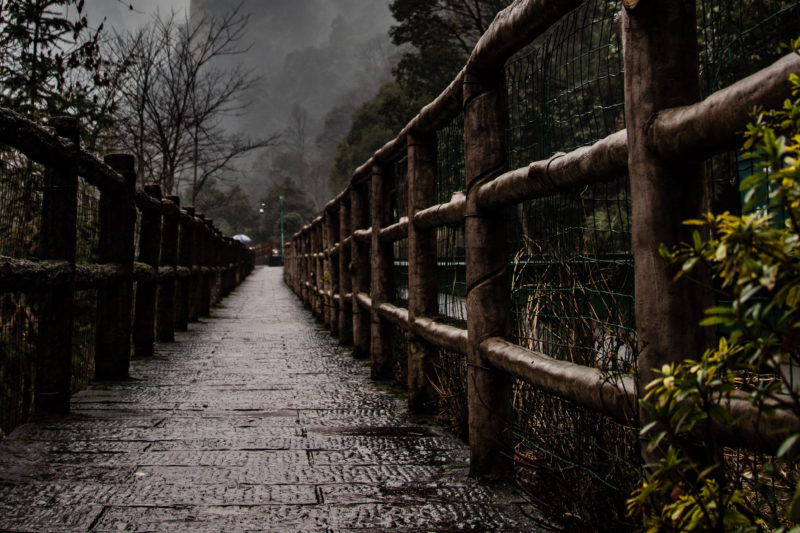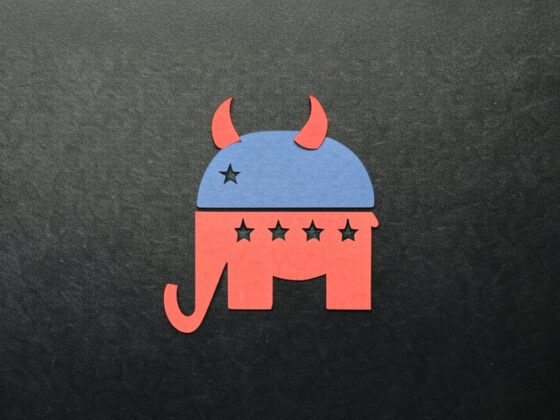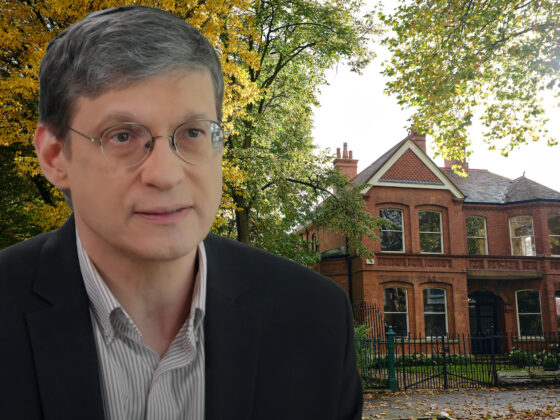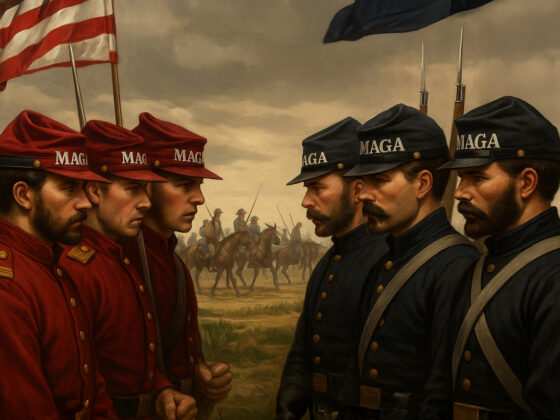My personal area of interest lies in Formosan affairs. Perhaps better known to most as Taiwan, Formosa is the main island of the territory currently occupied by the Republic of China government-in-exile (not to be confused with the Communist-led People’s Republic of China, commonly known as China). As someone born and raised in the US, it is hard to ignore the parallels between our histories. Formosan history is replete with the twists and turns of colonization, rebellion, and the ongoing battle for independence; or, now that there is some semblance of an “independent” Formosa, the battle for how it should be recognized and governed. Many volumes have been written on Formosan history, and the interested reader is encouraged to explore this history more deeply. For our purposes, it is enough to note the following: Formosa has been partially occupied by various European and Asian empires throughout its modern history, beginning with the Dutch in 1624; the vast majority of its inhabitants’ ancestral lines migrated from present-day Southeast China (Amoy [Xiamen] and environs), also in the 17th century; and it has been under (Republic of) Chinese occupation since 1945.
Understanding Formosa therefore requires, among other things, a deep understanding of China and the language used to discuss all things China-related. As a frequent reader of New Discourses, I could not help but recognize that time and again, there is striking similarity between the language used and events that unfolded in China over the past few centuries, and the modern Western language of Critical Social Justice as we watch current events unfold before our eyes. I have a sneaking suspicion, which if I were an academic or a scholar might be called a working hypothesis (I am reluctant to use the word “theory,” for obvious reasons), that the modern phenomenon of “Social Justice” is not in fact modern, and that it occurred in China in a very similar fashion around a hundred years ago. The eventual result of an obsession with racial and ethnic differences in late 19th—early 20th century China, perhaps unsurprisingly to readers of ND, is the seemingly monolithic Chinese Communist Party, with its near-absolute control over the lives of 1.4 billion peasant subjects. I suspect that we might learn something useful regarding our own situation by understanding the evolution from Chinese “Critical Social Justice” to Chinese Communism more clearly. Specifically, although I am not an expert by any means, I imagine that viewing our current social ills as they occurred in a different time and place may add some clarity that we miss when we are “in the mix” ourselves. In this post, I explain briefly some of the “leads,” which I think might be good places to start looking.
Critical East-Asian Theory is already well underway in academia; books and papers abound. From what (little) I have read thereof, this literature uses the same familiar tactics employed with regards to other “identity categories,” and applies them to the Chinese (or more accurately, Han) category to explain the power dynamics of present-day East Asia. These works provide clear and detailed accounts of how Chineseness (or Han-ness) supposedly forms the basis of power in East Asia. However, while I am not a “professional,” my own takeaway based on a passing knowledge of not only Western literature (including “Critical Han Theory”), but also Chinese literature and a more than a decade of “lived experience” on “Chinese” Formosa, is slightly different. In particular, Critical Han Theorists, despite the depth and breadth of information they present, fail to reflect on how those seeking power in China around the turn of the 20th century used exactly the same tactics employed today by Western “Theorists” to obtain it. That is, by positioning themselves as anti-Chinese-supremacists, the actual Chinese supremacists successfully fomented a society-wide obsession with race and ethnicity (zu or minzu, which the Communists typically translate as “Nationality” in English, explained below), which was then used to manufacture demand for complete and total social control by the general public.
In other words, while Western academics are only now looking at China with their Critical lens, I believe China beat them to the punch. China became wholly obsessed with race, ethnicity, and identity politics to a degree not yet realized in the present-day West; although thanks to the Theorists, we are well on the way. I believe that obsession was fomented specifically by the Communist Party, in order to provide a social environment which could be exploited for their own rise to power, and that their continued “forcing” of racial and ethnic identity politics into all aspects of society allows them to maintain their power today. If I am correct, then unless we can rid ourselves of our own unhealthy obsession with identity politics, I don’t see any other outcome than that we will also slip, first gradually and then all at once, into the same sort of racially-conceived authoritarian dystopic nightmare.
Recorded Chinese history is voluminous, and largely unknown in the West. We hear claims of China’s much-touted “5,000 year history,” and Chinese people themselves view this history as part of an “unbroken history of the Chinese race [zu].” These stories are almost entirely modern fictions, but they have come to form the cornerstone of present-day Chinese identity politics. Even a cursory inspection of Chinese history reveals that no such “unbroken 5,000 year history” presents. Much as the European Kings of the Middle Ages, so too the Emperors of the East Asia were highly variable in their beliefs, practices, cultures, languages, identities, geographies, and so on. In general, so long as an Emperor maintained power, the precise ethnic and racial composition of the peasantry was of little concern, if it was considered at all. And yet, despite millennia of war and conquest between groups that were alternately divided along political, regional, linguistic, or any other axes we can imagine, the vast majority[1] of people in China today consider themselves as part of a single ethno-racial group, the Han.
This is the first point of similarity. In 21st century Western Critical Theory (WCT), we are told that America is a White nation, founded in and maintained by Whiteness. In what we might call “Eastern Critical Theory” (ECT), which had become clearly articulated by the 19th and early 20th centuries, China came to be seen as a Han nation, founded in and maintained by Han-ness [Hanzu]. Of course, much like Whiteness, contemporary notions of Han-ness were largely ahistorical, and would have been unrecognizable in any prior era. Also, much like Whiteness, the ideas were built around a kernel of truth, in that Han-ness (along with a variety of other identifying categories) was used for political gain at times throughout Chinese history. The Communists took these partial truths and created a grand narrative, which was then leveraged as a political tool in the struggle for “equality [minzu pengdeng].” (Note that the Communists did not need to invent a new word like equity to capture their meaning; they were explicitly Marxist.) Ultimately, this new idea of Han-ness was weaponized for consolidation of power against both “non-Han” and Han alike, a process that we see ongoing in the West today.
In WCT, we see the “lengthening” and “widening” of Whiteness ever further into the past, and over an ever larger geographical area. The timeline of the “White sphere of influence” is lengthened from the present, back to Reconstruction and the Civil War, to the founding of the Republic, to 1619, to 1492, and earlier. Geographically, it starts in certain parts of the US, usually Virginia, and is expanded to cover all of the Americas, then Europe, and then the world at large. Groups such as Italians, Poles, Slavs and others were not seen as White until recent history, after which the full history and power associated with Whiteness becomes “assigned” to them. In ECT, Han-ness went through much the same process, such that despite being a modern construct, the people of China today firmly believe their Han roots can be traced back 5,000 years to what Chinese history books teach as the beginning of civilization (and according to some, the beginning of the human race) on the Yellow River delta. Yet a few centuries ago, groups that were present at various times and places around East Asia were seen as Other (Yi in Mandarin, which literally means “Other” but is typically glossed as “Barbarian”, itself a Greek racial epithet from the idea that foreign speech sounds like an incomprehensible series of sounds, e.g., “bar bar bar”) from the perspective of any of the various polities that may have existed in a given period. These have now all been merged into the public consciousness as Han. Indeed, the so-called “Snowball Theory[2]” of Han-ness proposes exactly how and why such sinicization supposedly occurred over a period of millennia. This construction can be summed up in the Mandarin translation of the phrase e pluribus unum [Mandarin: duo yuan yi ti], which forms part of Xi Jinping Thought and is therefore taught in all levels of education and throughout society. The translation reads: “many elements, one body,” where body is explicitly described as the “Chinese Nationality” (Zhonghua Minzu, read: Chinese ethnicity or race), historical and cultural structure (Zhonghua wenhua), and political system of China.
Confucianism is another area that may not be a terribly familiar topic for Western readers, and again such East-West parallels abound. Confucianism is an expansive topic. Suffice it to say by way of an overly-simplistic analogy that Confucianism provides East Asia with the same type of “common operative framework” of philosophy, theology, science, and literature that is provided in the West by the Enlightenment. Nevertheless, Confucian thought was quickly singled out as the root of the power dynamics underlying dynastic feudalism that had plagued East Asia for millennia, and was therefore one of the first things to be done away with during the Revolution.[3] Confucian thought and Han-ness suppressed the “Minority Nationalities” (shaoshu minzu) in exactly the same way we are now told that Enlightenment thought and Whiteness suppressed “People of Color.” In fact, the term “Minority Nationalities” is itself a neologism much like “People of Color,” used to replace the now-derogatory “Other” (yi), hence the common gloss of “Barbarian” which conveys such a derogatory intent. And just as Critical Theory contradictorily sees itself as the continuation of an Enlightenment which it purports to deconstruct, even as Enlightenment thought persists and pervades through all Western institutions, including those occupied by the Critical Theorists, so too did the Communists seek to deconstruct Confucius even as they adopted Confucian underpinnings through the whole of their social structures.
Ultimately, these comparisons between histories of the East and West as depicted by their respective Theories are extensive and far too technically complicated for a blog entry. But the parallels in how they consolidate an uncertain, amorphous, and complex past into a very simple, highly racialized and radicalized present are straightforward. As I see it, the parallels between revolutionary China and present-day America reach a nexus in the early 20th century, after the abdication of the last Ching Emperor, with the formation of the Kuomintang (KMT, China Nationalist Party) in 1912 and the Chinese Communist Party (CCP) in 1921.
Although both parties come from similar ideological roots—Soviet-style revolutionary socialism—the KMT leaned heavily on an ideal of Chinese nationalism, encouraging people of all ethnic groups to see themselves as Chinese first and foremost. They formed a constitutional republic, the Republic of China, and proclaimed equality for all under the law. To demonstrate their acceptance of ethnic minorities as equal, the original Republic of China flag used five colored stripes, one for each of the 5 major ethnic groups. Against this background, the Communists formed in opposition, criticizing the KMT for using their Han-ness to create a Chinese legal framework that was inherently unequal. In their view, the Republican Constitution bound together “Chinese” (Hua) and “Han,” and was then used to impose Han-ness on Minority Nationalities by calling on them to see themselves as “Chinese” (Huaren). Mao Tse-tung later coined the term “Han Chauvinism[4],” (Hanren Shawen Zhuyi) which is nearly identical in meaning and use to the term we are familiar with today: “White Supremacy.” This is exactly what we are now told has happened in America; that the American legal system was developed by White Supremacists with the specific intent to bind America with Whiteness for the purpose of enslaving (or at least, excluding) People of Color. To solve this problem, the Communists positioned themselves as “Good Han” (Hao Hanren), which again forms a near exact parallel to the modern term “White Ally.” Mid-century propaganda films and television depict the Communists as “Good Han,” helping ethnic minorities solve their communities’ internal problems where the minority communities are rife with crime and corruption. (Robin DiAngelo would undoubtedly have made a killing as a “Good Han” author and lecturer in Revolutionary China.) The Communist solution to Han Chauvinism then, or to put it another way, what it meant to be a “Good Han”, was to formally codify ethnic and racial minorities in law, categorizing people into one of 56 groups (55 minzu “nationalities” + Han). At the expense of individual freedom, ethnic and racial divisions are thus enshrined in the Constitution of the People’s Republic of China:
Chapter 1, Article 4
All nationalities in the People’s Republic of China are equal. The State protects the lawful rights and interests of the minority nationalities and upholds and develops a relationship of equality, unity and mutual assistance among all of China’s nationalities. Discrimination against and oppression of any nationality are prohibited; any act which undermines the unity of the nationalities or instigates division is prohibited.
Despite the cooperation of the KMT and CCP in the early days of the Republic, their ideological divisions, largely a result of identity politics rather than actual policy differences, that is, their views on what it means to be “Chinese,” “Han,” and the fetishization of race and ethnicity, grew to a boiling point. Ultimately, in 1927, the rift sparked a long, drawn out civil war that has not yet been resolved. The analogues stop here, as it appears the West is currently nearing just such a boiling point, but perhaps we can look to the East for a view of what is to come. There seems to be an impression in the West that the Communists rule China with an iron fist, stamping out dissent and “hammering down any nail that sticks out.” While this is true, it is crucial to understand that, for the most part, it is the large portion of the general public who have accepted and internalized “Eastern Critical Theory,” perhaps known more commonly in the West by the Communist Party Chairman (not “President”) Xi Jin-ping’s preferred label of “Socialism with Chinese Characteristics,” that not only accept such rule, they demand it.
The Communist Party worked for decades to craft sophisticated “Critical Theory” style political propaganda to win over the hearts and minds of the people. Readers have likely heard of The Little Red Book, a collection of Mao quotations. I encourage you to read it, to see for yourself why I draw the following two conclusions: First, the propaganda is excellent. It is easy to imagine how commoners, not familiar with such academic language or the political machinations behind it, might interpret it in a very positive light, and how such a comprehensive and seemingly positive worldview could lead to massive popular support, demanding the changes promised to them over many years. Second, the parallels between this collection of mid-century ECT propaganda and present-day WCT are striking and unmistakable. Right at the beginning of Chapter 2[5] (Chapter 1 is a brief description of the aims of the Communist Party), we read: “In class society everyone lives as a member of a particular class, and every kind of thinking, without exception is stamped with the brand of a class.” While Mao in 1937 used standard contemporary socialist language around “class” in this quote, it is clear that class and “race” were highly intertwined throughout Communist Party thought. There is little if any difference between this, and a modern quote from any of a number of Critical Theorists, replacing “class” with the preferred term of the day. The same is true for any number of quotes throughout the book.
Perhaps the most crucial point for Western readers to take away from the above is that ECT did not bear fruit overnight. To repurpose a turn of phrase from Hemingway: How do you go Communist? Two ways. Gradually and then suddenly. It took some three decades until, in 1966, Mao had built up enough public support to begin the Cultural Revolution in earnest. Despite what many Americans would like to believe, the US does not appear to be immune to these tactics. Communist ideologues have seen and understood the success of long-term planning, using cultural institutions to drip-feed propaganda slowly over a period of decades to the general public. Perhaps events of the past few years have caused some in the US to take the threat credibly, but my fear is that it’s too little, too late, as we are just now beginning to see the “call to arms.” Especially since the 2016 election, and now heavily accelerated since the recent 2020 election, anyone on “the Right” (read: anyone who disagrees with the Party; Mao used exactly the same word in exactly the same way) has become a target for being put on a list, fired, banned, and generally excommunicated from society. When all of that is not enough, there’s only one step left to take. I sincerely hope the US can somehow avoid it, although history leads me to suspect that it may be difficult or impossible to tear down the foundations of society without massive casualties along the way. We should take this lesson from history, but at present we appear on track to re-learn it the hard way. The Cultural Revolution ultimately resulted in the deaths of over 20 million Chinese people. Of course, most Chinese people today have no knowledge of this number, or the events that lead up to it. They aren’t allowed to, but if they were, it wouldn’t matter. On occasion over the years, I have discussed this with Chinese I happen to meet, sometimes showing them stacks of documentary evidence. They simply brush it off as American propaganda; the beneficent Communist Party could never do something so horrible. Throughout the years leading up to it, nobody could see it coming. In the moment, the people believed what they were doing was righteous. Afterwards, nobody knows what happened, or they have become entirely unable to believe it.
I end where I began, on Formosa. Unfortunately, the pernicious ideas of Critical Theory, whether East or West, are both highly relevant to the past and future of this small island. As the ideas of Eastern Critical Theory infected China, so too have they infected Formosa since the arrival of the Chinese Kuomintang en masse in 1949. The KMT, perhaps by learning from the Communist playbook, began a brutal campaign of martial law shortly after their arrival, ostensibly to promote “equality” between the local ethnic groups and the new Chinese arrivals. They used the same tried and true divide and conquer strategies to pit native groups against one another, and used the manufactured “fog of war” to take control. Since the end of martial law, the Chinese on Formosa have even adopted terms such as “Taiwanese Chauvinist,” to suppress support for local traditions and culture, such as the Taiwanese language, which had all but been erased from public visibility under Chinese rule. The Chinese have attempted, with reasonable success, to melt the Taiwanese people into the “Han Snowball,” such that a significant minority of Taiwanese now feel they share a common 5,000-year history with their “Mainland Compatriots” (Dalu Tongbao). Formosan people (now known as “Taiwanese indigenous people”) of Austronesian heritage were relatively isolated on Formosa for well over 5,000 years. Despite having more in common (phenotypically, culturally, linguistically, etc.) with the Maori of New Zealand than they do with the “Han Chinese,” today they are among the most staunch supporters of the KMT. Since the end of martial law, ideas such as the “Han Snowball” and “5,000-year Chinese history” have been widely and loudly rejected by the Taiwanese (who arrived on Formosa from Continental East Asia around the same time as Europeans arrived in the Americas), and as Taiwanese people find their footing in a newly democratic system, they have slowly begun to rid themselves of this new-found “Chinese” heritage.
And yet now, just as democratization is taking root and Taiwanese are rediscovering their own lost history, Western Critical Theory has begun to make appearances in certain left-leaning Taiwanese academic and political circles. My experience in Taiwan is that most people, thankfully, see through Western Critical Theory as clear political propaganda. It seems that perhaps we are less able to see through propaganda when it is directed at us specifically, causing an emotional reaction that clouds our judgement. Therefore I wonder if it would not be beneficial for others (presumably those far more qualified than myself) to take these parallels and flesh them out more fully, to provide Westerners who are currently stuck in the Critical Mud with an opportunity to view Critical Theory more objectively, by examining it when applied under different and impersonal circumstances. I hope that it becomes clear when viewed from afar: Critical Theory and an obsessive fetishization of identity politics has nothing to do with “you.” It isn’t about any of the things it purports to be—justice, equality, and so on. Rather, plain and simple, it is a “divide and conquer” strategy used to take power by convincing “the masses” that someone must, in order to right all the wrongs that have been done in the past. Internal contradictions, revisionist history, basic human decency, common sense, and sanity be damned. Recent Chinese history makes that abundantly clear.
The Critical Theorists tell us to learn from non-White and non-Western “knowledges.” Let’s try to take this lesson from the Chinese to heart.
References
[1] 92% according to gov.cn population statistics; Han is fittingly placed last in the list which is otherwise ordered roughly by size.
[2] Xu Jieshun – Understanding the Snowball Theory of the Han Nationality (2012)
[3] Joseph R. Levenson – The Place of Confucius in Communist China (1962)
[4] Mao Tse-Tung – Criticize Han Chauvinism (1953)
[5] Quotations from Chairman Mao Tse-tung, 2nd Edition, available on marxists.org













29 comments
Just like to point out that the myth (and its clearly a fabricated myth) that the “Chinese” invented gun powder and the compass. There is absolutely zero real credible proof and evidence that the “Chinese” invented or came upon gun powder, no reliable actual records and authentic documents.
The only reliable evidence comes from a doubtful unreliable account of a person trying to use allegedly salt petre for bizarre superstitious ritual reasons but no documentated real evidence of the “Chinese” using salt petre for weaponized projectile way or manner.
European Jesuit missionaries and Arab never ever documented the “Chinese” using gun powder or utilizing it in the way we understand it in the modern sense or term. Infact Jesuit missionaries and the Portugese and other European colonial powers had to actually teach the “Chinese” how to make actual rudimentary weapons that utilized salt petre for projectile purposes or in a weapon iced gun like fashion. Jesuit missionaries had to actually introduce to the “Chinese” how to actually construct basic cannons and the idea of a cannon.
Also there is absolutely no evidence that the “Chinese” even knew how to utilize formal compasses or sextants, the compass they fraudently claim to have used was a giant metallic spoon on a board and it was completely unreliable and did not resemble in anyway modern naval compasses and foreign Arab-Persian accounts and European missionary accounts show the “Chinese” had NO KNOWLEDGE OR any familiarity with or know how about the workings of a modern compass, let alone utilizing it for naval-maritime activities when they visited the region.
The fraudulent “Chinese inventions” claim is part of the phenomenon described in this article of communist “social justice” whereby the “Chinese” bribe western academia and engage in all sorts of historical revisionism to create a myth of false superiority and a false sense of security linked to that with their “peoples” and to fool the ignorant world with also in linkage to that for false narrative indoctrination purposes.
ik for a fact the woke left arent doign this alone WEF is pushing this so they can divide and then conquer the US WEF Sees the woke left as “Useful Idiots” and as theyre own red guards and the second WEF gets what they want the second what happened to Mao and Lennin’s red guards will happen to the woke left too. Indoctrination can backfire and fail on children and the seeds the left place inside them can be removed even if it means with or without force or torture our political dissent and 1776 history and values will never be erased or silenced
Nobody tell this guy about the Taiping Rebellion – 80 years before Mao and nothing to do with Marxism. Killed more people than Mao and obsessed with hanness. These identity idiots aren’t Marxists. They don’t give a shit about class. Actual Marxists like Adolph Reed and Freddie DeBoer hate this stuff. It’s lazy analysis and in the same category as leftists calling everything racist.
“ Groups such as Italians, Poles, Slavs and others were not seen as White until recent history, after which the full history and power associated with Whiteness becomes “assigned” to them. ”
This reminds me of what happened in Tacoma Washington last year. When the school district realized their PoC category was out performing the “white” category, they assigned Asians to the “white” category simply to show that white supremacy still existed and they need additional resources to fight it.
My issue is these people are not interested in knowledge, wisdom or truth; just power.
Great article, but there’s one further point you need to make.
It’s not an accident that ECT and WCT bear parallels to each other. Dig deep enough and I think you’ll find direct links between the CCP (Chinese Communist Party) and deliberate attempts to infuse American and other western societies with CT. Most wont remember that back in ’68 Mao’s Little Red Book was translated into English and handed out all over American campuses. Many of those who read that book at students are now the ones leading the US, it’s corporations, media, and political parties as well as it’s academic and social institutions. Those people are using the same methods the CCP did in China because the KongFei (Communist Bastards) wanted to start a revolution here.
It seems they have succeeded.
Add the Irish in there as non-white along with Poles, Italians, etc… (I am only 1/3 way through reading).
‘But I’m told the Fascist is on the way out.’
It’s not Fascism when WE do it!
‘Social credit is here already. It’s just not codified.’
It will never be codified in a statute book. Too amorphous, too changeable, plus constantly having to amend laws is just too much hard work. Much better to farm the enforcement of it out to the Tech end of the firm who can dream up new ThoughtCrimes as needed.
Well, we are already on the road to a de facto social credit where those who transgress can be de-platformed and cancelled.
The tragic thing is that the internet – a thing we though 25 years ago would lead to almost unlimited freedom – is a place where everyone can spy on everyone else and report back to a mob, thus making it more like a village with all its intolerance and intrigue.
‘the internet – a thing we though 25 years ago would lead to almost unlimited freedom – is a place where everyone can spy on everyone else and report back to a mob, thus making it more like a village with all its intolerance and intrigue.’
The village elders usually knew when to pull back on the reins, often simply out of a sense of self-preservation (Uh, we are supposed to condemn George Smith to death for having laid devil’s eggs based only on the incredible account of Cindy Williams who just accused you of having congress with a male dragon? And by the way the Smiths have threatened to burn down your house with you and your family in it if we burn cousin George at the stake). By contrast today the village elders of the internet have made themselves immune to accountability or retribution and thus are indifferent ri if not supportive of the destruction the mob wreaks on The Other.
Some thoughts:
It occurs to me the culture of any society willing to accept despotism makes little difference. The historical record appears to bear out the notion humans have a propensity (when the circumstances are correct) to welcome a dictator.
As to the essay, I agree with the author’s ideas. I also enjoyed learning more about Chinese culture.
I have long used CCP as well as USSR, Mussolini’s Italy, etc as an indicator/s of what the future likely holds for America. I’m not the first to note similarities between CCP social credit score and what now appears to be an American social credit score. The difference? It hasn’t been openly and fully implemented by the US government….yet. Mao was little different from Stalin.
For those of you who read H.G. Wells, The Time Machine, I offer:
Is American society becoming the world where the Eloi and Morlocks lived? Would really like to hear comments on that.
‘Is American society becoming the world where the Eloi and Morlocks lived? Would really like to hear comments on that.
No. The former lords had become cattle for the ex-proledtariat.
One might call the social system we may be entering neo-feudalism, neo-Stalinism, or internal colonialism, whereby the parasitic masters live fat and happy off the labor of the disenfranchised populace/slaves/coolies who are kept in line by constant surveillance and intimidation. Orwell and Zamyatin might have been all too prescient.
Tars-
Thanks for your input. I appreciate it “No. The former lords had become cattle for the ex-proledtariat”. Yes, that’s true. I wondered if some of the elites are becoming/have become mindless, goalless, helpless, asocial creatures at the mercy of a more brutal system. Maybe my wonderment was too tangential.
Agree, the main aspect of the analogy that doesn’t work is the fact that someone/bodies from the ruling class will stay the ruling class, but it will only be a handful.
The first group of the people who are potential lunch are the intellectuals and students.
Agree. The surveillance state unfortunately is already in America. I too think it’s going to get worse. To wit: read an AP article in weekend paper about a 25y/o female who thought it was her “civic duty” to turn in names of people at Capitol protests. Her name might have been Karen.
Hmmmm. People thought the Patriot was pretty bad. What’s next.
‘People thought the Patriot was pretty bad. What’s next.’
Vaccine passports? Need to travel permits? Proper political affiliation cards? The possibilities are endless.
Vote-by-mail in the coming years will be the vehicle by which the secret ballot is eliminated. Then the powers-that-be will know how you voted and reward or punish you as necessary.
“Then the powers-that-be will know how you voted and reward or punish you as necessary.”
Given the actions of corporate America in the last couple of weeks , I’d say your verb tense is wrong. But I’m told the Fascist is on the way out.
Social credit is here already. It’s just not codified.
The Eloi and Morlocks of The Time Machine is the exact analogy used to show how Juche in North Korea works, basically a political religion that keeps the majority of the population weak and obedient while those with the monopoly on power devour them.
“In 21st century Western Critical Theory (WCT), we are told that America is a White nation, founded in and maintained by Whiteness. In what we might call “Eastern Critical Theory” (ECT), which had become clearly articulated by the 19th and early 20th centuries, China came to be seen as a Han nation, founded in and maintained by Han-ness [Hanzu].”
The difference here is that the ECT propaganda positioned Han-ness as something to be revered, whereas WCT propaganda positions White-ness as something to be loathed. The more apt comparison on this point is German Nazis, whose propaganda positions Aryan-ness as something to be revered.
The Han also seem to have the overwhelming numbers, according to Wikipedia – unless what the writer says about new identifications has changed matters . Bringing non-Han into the Han-fold would seem an easier job. They do this today with positive propaganda based on conquest, success, inventions, not primarily on victimhood? although overcoming oppression is a victory. Wheras the Western communist nationbuilders are demonising the white majority. And they need more bodies, and need to propagandise them, as they immigrate, with the shared Oppression origin story. Their task is, if not destroy whites, to have them identify as Black, and then to accept them as equals in the new racially-aware nation.. Something doesn’t add up. It’s a dramatically more extravagant project than merely crushing co-ethnic civnats and tidying up a small fraction of peripheral minorities.
That was a difference that occurred to me on the first reading, but I couldn’t be sure because I don’t have a firm grasp of Chinese culture.
Agreed. To truly mirror what’s occurring in China would require the ‘White’ peoples of the Anglosphere to be actively engaging in extermination of the POCs, which ain’t happening. What’s going on in the Han Empire is more like National Socialism than Communism.
Yes, I’m a little confused too. We can reason that “Han-ness” and “whiteness” share parallels in the sense that both are somewhat artificial and ahistorical, etc., but the former seems have primarily been pressed into service for purposes of ethnocentric nationalism with Mao’s crusade against “Han-chauvinism” being a somewhat momentary inversion of what was, and probably still is, a valorised category in China?
On the other hand, “whiteness” in CSJ guise seems to be constructed for the exact opposite purpose; not as a glue to bind people together in the name of a shared national identity but as a means to partition people and disrupt a national identity.
On another note:
“we are just now beginning to see the “call to arms.” … now heavily accelerated since the recent 2020 election, anyone on “the Right” (read: anyone who disagrees with the Party; Mao used exactly the same word in exactly the same way) has become a target for being put on a list, fired, banned, and generally excommunicated from society. When all of that is not enough, there’s only one step left to take. I sincerely hope the US can somehow avoid it, although history leads me to suspect that it may be difficult or impossible to tear down the foundations of society without massive casualties along the way. We should take this lesson from history, but at present we appear on track to re-learn it the hard way. The Cultural Revolution ultimately resulted in the deaths of over 20 million Chinese people.”
It’s good to see another contributor who truly understands the stakes. The fact that those tens of millions of deaths occurred within living memory, and yet are still considered fantasy by the population speaks to the raw power of Leftist propaganda.
I’ve never fully faulted German citizens for not speaking out during the Nazi horrors, because if your government is willing and able to round up masses for extermination, it’s you against them. Kudos to those that resisted, but it’s not irrational or immoral to keep your head down and protect your family. I suppose the same might apply to the Chinese, given their arguably worse track record.
With calls from prominent politicians, media figures, and intellectuals for mass “deprogramming”, and “re-education”, it seems what was previously unthinkable is in fact thinkable.
“I’ve never fully faulted German citizens for not speaking out during the Nazi horrors…”
Milton Mayer’s They Thought They Were Free discusses this point in depth.
The Nazi pogrom started slowly, after a decade of anti-semitic propaganda set the stage blaming the Jews for ‘stabbing Germany in the back’, thereby causing Germany’s loss in WWI and the subsequent Treaty of Versailles humiliation. When Jews started coming up missing, Germans—who interacted with Jews as rarely as white Americans interacted with black Americans around the same time—were largely unaware of what was happening. It wasn’t their problem, any more than it would be a typical white American’s problem, if a black American family across town disappeared in the middle of the night. Maybe they moved. Maybe they emigrated to New York or Chicago.
By the time that rumors of the Holocaust started circulating, they were too fantastic to be taken seriously, and besides, who had time to worry about others’ safety, when Allied bombs were raining out of the sky?
Another book that everyone should read is Margaret Thaler Singer’s Cults in Our Midst.
Never underestimate the power of a vile ideology’s propaganda to sway the masses. For example, look at how easily American leftists have gotten Systemic Racism™ into the mainstream vocabulary and redefined White Supremacy™ to mean Enlightenment ideals.
That’s certainly true from 30K feet, but there were accounts of Germans who witnessed the herding of Jews into the trains, knowing what was happening wasn’t exactly a mass vacation to a Baltic resort.
What we’re seeing today is more and more prominent people skipping the waiting for the propaganda to take hold and calling for the camps straight away. The one-sided concern for violent rhetoric, particularly on social media – who then silences only one cohort, providing tangible benefit for one party – would have gotten you laughed out of the room if you suggested it a possibility just five years ago.
no i doubt they want reeducation camps sure they may have had reeducation camps in communist Cuba or Communist Russia but it doesnt sound like the lefts style like how forced labor camps and gulags dont sound like the lefts style
Yeah, sure! The best way to learn something unbiased about National Socialist Germany is reading a book by a man named Mayer and a woman named Singer! Play it again, Sam!
“With calls from prominent politicians, media figures, and intellectuals for mass “deprogramming”, and “re-education”, it seems what was previously unthinkable is in fact thinkable.”
No i highly doubt they want reeducation camps cause millions of americans are against CRT and Anti white BS reeducation camps dont sound like the lefts style
These are very interesting observations and keen insights. Will we see you put these thoughts for Taiwan readers in Chinese or Tâibûn sometime soon A-ióng?
A thought provoking piece. It’s tough to compress a complex and unfamiliar subject down to something digestible like this, but I have yet to metabolize it. I might have to go back for another reading.
Something that I would find helpful is a little more exposition on the racial or ethnic make-up or “identity categories” in China. I must admit near total ignorance of Chinese demographics as I have always considered it much more ethnically/racially monolithic than say the US. Are their classifications as seemingly arbitrary and nearly useless as in the US? (Think Latino or non-white Hispanic, or other nonsense.)
Is the connection between WCT and ECT explicitly Marxian? Specifically, is Marxism causative here, or does Marxism simply establish roots more easily in a society with social fault lines like Europe and East Asia? I’m not sure this is answerable, or if it is, in a short space.
“Is the common factor in all of these toxic ideologies marxian? ”
IMHO yes it is. The worldview that societal function is predicated on power struggles between groups is the common pathology. When inculcated by indoctrination and internalized as a lens that filters perception of reality, the result is an ideation indistinguishable from that of a delusional disorder with non-bizarre delusions (delusions that are plausible but nevertheless not supported by available evidence)
Another article on this site by a psychologist paraphrases Jung to say
The love of power vs the power of love
I’ll add my take on this
the worldview of
Marxism vs Western Liberalism
Power struggles between groups vs communication and cooperation between groups in order to achieve common goals
Marxist derivative ideology instills mental illness, a paranoid delusional disorder where the observation of reality is replaced with preconceptions of a hostile world where power struggles are a constant personal threat
“Systemic Racism” for example
It’s complete madness
The underlying pseudo realities of dialectical materialism, a pseudoscientific piece of nonsense, insists that the destruction of existing social order will result in the emergence of the new utopian order. Of course this is diametrically opposite to reality. What emerges from the destruction of a functional order is a nonfunctional disorder, not a communist utopia
Marxism is a mind toxin that’s responsible for the deaths of hundreds of millions in the twentieth century alone
Allowing Marxists to infiltrate University to indoctrinate kids was not a good idea. LoL , but how do we fix it? That’s the question
Jim